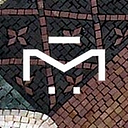Intricate and bold mosaic mural artwork as a propaganda tool in Ukraine’s past
Art has always been at the forefront of the social and political situation of every country, and mosaic art is not an exception. Just like every other widely admired art form, mosaic art was often used as means of propaganda and advertising. However, unlike with many other art forms, the messages sent with mosaic art tended to stick around much longer, if not for an eternity.
Once upon a time, my favorite non-mosaic artist said: “Modern art is a disaster area. Never in the field of human history has so much been used by so many to say so little.” Those versed in artistic activism will recognize this Banksy’s quote. And just like everything Banksy does, this quote has many points of interpretation too. Is it always good to use art to speak and when does that use become abuse?
Just in case you are living in outer space or some parallel fairy realm, this article is “inspired” by the current events in Ukraine. As someone who has family roots in Eastern Europe, I could also say that this article may be colored with my personal standpoints here and there, but if you’ve been reading this blog for a while, you already expected that from yours truly.
No one knows how many of the Ukrainian mosaic artworks will survive this war, so this is a unique chance to capture some of them and their history. Many of our fellow bloggers took a different approach and talked widely about the history and the background of Ukrainian mosaic art going all the way back to ancient times. In order to make this article closer to you, I’ve decided to take a short stroll back into the near past.
Mosaic art has always played a significant and meaningful role in Ukrainian culture and as such, it was also used by the Communist Party during the dark times of Soviet communism. In 2014 many mosaic artworks were subject to the decommunization process as a result of the Revolution of Dignity. Numerous mosaic artworks of the Soviet era were dismantled and destroyed. However, the artistic community of Ukraine became divided at the time, because while some thought that the era of communism should be wiped out completely, others thought that preserving monumental art in terms of its undeniable artistic value was a marker of civilized society.
Ironically, the issue of these colorful mosaic artworks remains unsolved to this day and war has never been kind to art or monuments of past times. Used for national manipulation and communist propaganda, these remarkable pieces of artistry and skill hide encrypted stories of collective spirit and deceit, of trust and trickery. Huge, bold, and bright, they proudly told the story of a significant part of Ukrainian history during the cold war era.
The beauty of some of the Ukrainian mosaics is undoubtedly lost forever. However, some of Ukraine’s modern-day mosaicists will resurface after all this is over with mosaic masterpieces that will mark the time of recovery. We will talk more about them in one of our future articles. Stay tuned and #supportukrainenow
This article was originally published on Mosaics Lab’s website.
